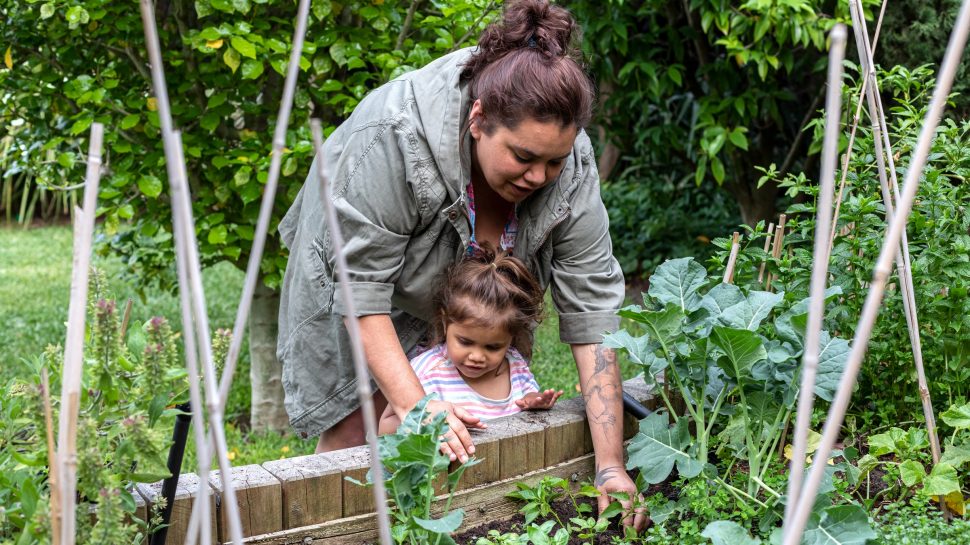13 easy ways to reduce your carbon footprint at home
From starting up a veggie garden to turning off the lights or jumping in a cold shower, there are lots of things we can do to reduce our carbon footprint at home. Together, we can all help protect the planet. Here are 13 easy ways you and your family can start today.

While Australian households generate at least one-fifth of Australia’s greenhouse gases—more than 18 tonnes per household each year—there are plenty of small things we can do at home to lessen our carbon footprint. And if everyone makes small changes, together we can make a big difference in reducing carbon emissions and our impact on the planet.
Here is a list of 13 easy things you and your family can start doing at home today to reduce your carbon footprint.
1. Carry a water bottle
Keep a good collection of re-usable water bottles for all the family, and never leave the home without one. It will help stem the temptation of buying a single use bottle or can of soft drink from the milk bar while you’re out and about. A benefit for your teeth and the environment!
2. Start a veggie patch
Home grown food eliminates the carbon emissions used in intensive farming, storage, and transportation. So why not make that trip to the plant nursery and get all the family involved in nurturing a vegetable patch. Add a few chickens in the yard for luck. Space permitting of course!
3. Insulate your home
Whether you want hot or cold air, good insulation is a guaranteed way to keep your energy usage and bills down. To reduce it further, try reducing or increasing your thermostat by a couple of degrees (depending on the time of year) and see if you notice the difference.
4. Save every drop
Keep an eye on your water usage and turn the tap off when you can—pumping, treating, and heating water uses lots of energy. Things like shortening your showers, only running your dishwasher when full, not running the tap when you’re cleaning your teeth, and using a water saving shower head make a big difference. Switch to cold machine washes, and if you’re brave have the odd cold shower yourself!
5. Get on your bike
Whenever you can, ditch the car and jump on your bike. According to a University of Oxford study swapping your bike for your car, just once a day, reduces a person’s carbon emissions from transport by 67 percent.
6. Switch to solar power
If you have a roof, put it to good use with solar panels. Or if you can’t fit out your own solar supply, consider buying certified GreenPower, which is renewable electricity from your electricity supplier.
7. Swap out your light bulbs
Swap your light bulbs for energy saving ones such as LED bulbs wherever you can. And as you may have heard, turn off the lights when you’re not using them!
8. Eat less red meat
We may not want to hear it, but eating less meat reduces our carbon footprint. If the thought of a vegan diet makes you whimper, eating less red meat could be a good compromise. Meat Free Mondays has a handy calculator to show how swapping meat for a plant-based option makes a difference.
9. Choose your appliances wisely
When buying new appliances choose ones with a high star energy rating. Your appliances can make up around 30 percent of home energy use, so it’s worth the investment for you and the planet. You may pay a little more upfront but will save money by using less power over time.
10. Reduce, reuse and recycle
First, do you really need to buy it? If you do, be selective and try and buy recycled items, or items that can be recycled. Know exactly what can go in your recycling bin by checking on your local council’s website.
You can also reuse your mail packaging by covering or removing the labels and covering old paid-postage marks. If it can’t be reused, Australia Post branded plastic satchels are a good choice as they are made with 80% recycled content, while our parcel boxes are sustainably sourced, made with recycled materials, and can be recycled kerbside.
11. Feed the compost
Good for both your new veggie patch and the planet, set up a composting system for your food and green waste. A Princeton study showed that composting organic waste rather than sending it to landfill can reduce more than 50 percent of carbon dioxide-equivalent greenhouse gas emissions.
12. Go green in your home and office
How eco-friendly is your home office? As a start, laptops are more efficient than desktops. And get out of the habit of using the printer if needs be use recycled paper. Always recycle your old mobile phones, printer cartridges, coffee pods and clothes whenever you can.
13. Spur on your friends
Challenge and encourage your friends to reduce their carbon footprint too. Share tips so you can make a difference together.
This article was first published on 7 July 2022
Learn more about all the ways we are committed to helping build a sustainable society.
You may also like

ELK seamlessly weaves sustainability into its designs for the future
ELK seamlessly weaves sustainability into its designs for the future


